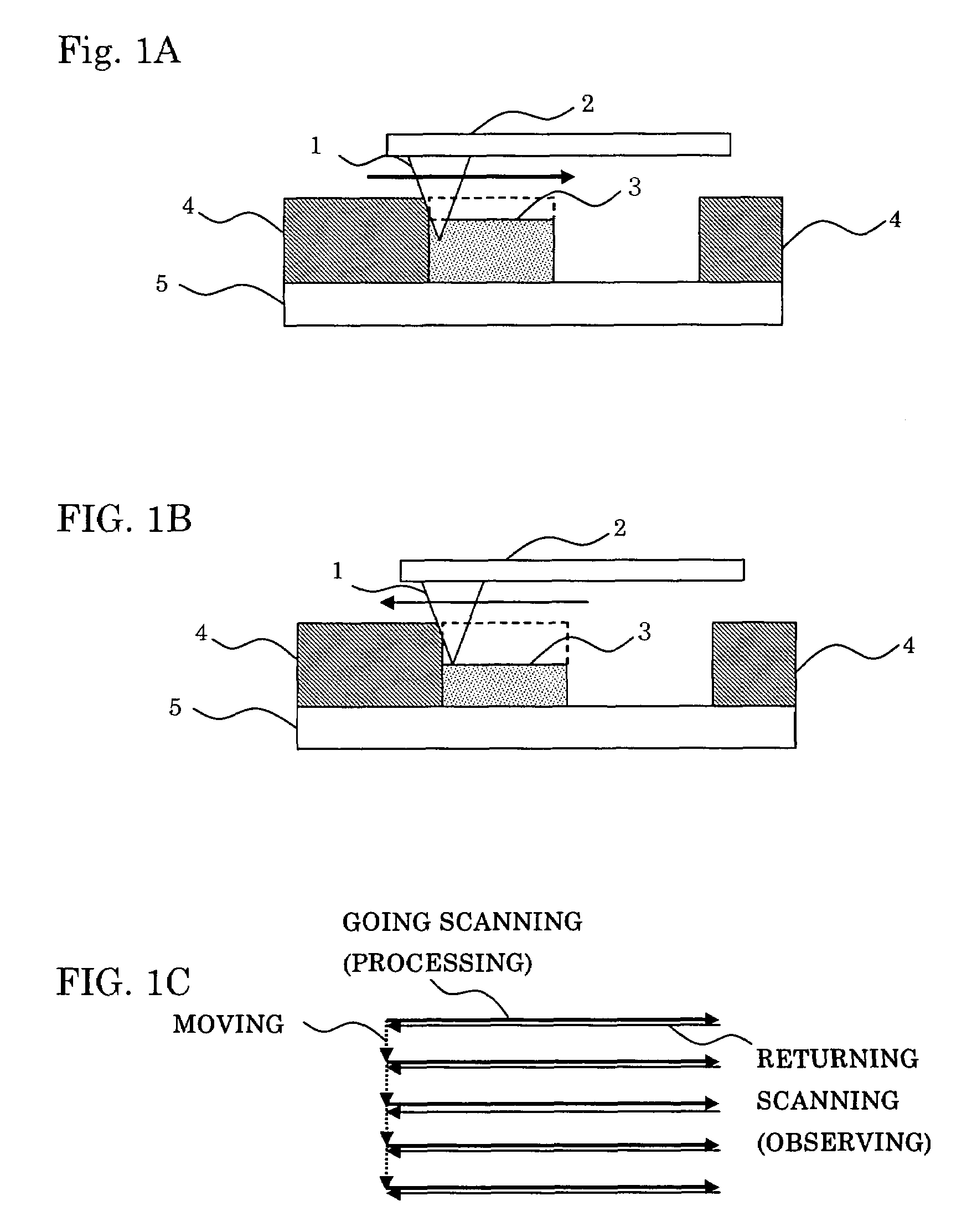Method of correcting opaque defect of photomask using atomic force microscope fine processing device
a technology of atomic force microscope and processing device, which is applied in the direction of originals for photomechanical treatment, mechanical roughness/irregularity measurement, instruments, etc., can solve the problems of device defect to all of the transferred wafers, and achieve accurate correction, accurate detection of ending points, accurate detection of drift amoun
- Summary
- Abstract
- Description
- Claims
- Application Information
AI Technical Summary
Benefits of technology
Problems solved by technology
Method used
Image
Examples
Embodiment Construction
[0024]Hereinafter, examples of the present invention will be described in detail with reference to drawings.
[0025]A photomask having an opaque defect found by a defect inspection device is introduced into an atomic force microscope defect correcting device, and a high accuracy XY stage is moved so as to position the opaque defect portion at the center of a view. When an opaque defect 3 is extracted in the atomic force microscope defect correcting device, the conventional method is used. That is, in FIGS. 2A-2C, in the conventional scanning method (FIG. 2C) where the going scanning is for observing (FIG. 2A) and the returning scanning is performed while pulling up a probe to the height not to contact to a pattern and moving it to the next start point (FIG. 2B), an area including the opaque defect 3 is imaged having a contact mode or intermittent contact mode of the atomic force microscope so as to be compared with a normal pattern 4 by pattern matching or the like, and thus the opaqu...
PUM
| Property | Measurement | Unit |
|---|---|---|
| height | aaaaa | aaaaa |
| atomic force microscope | aaaaa | aaaaa |
| area | aaaaa | aaaaa |
Abstract
Description
Claims
Application Information
 Login to View More
Login to View More - R&D
- Intellectual Property
- Life Sciences
- Materials
- Tech Scout
- Unparalleled Data Quality
- Higher Quality Content
- 60% Fewer Hallucinations
Browse by: Latest US Patents, China's latest patents, Technical Efficacy Thesaurus, Application Domain, Technology Topic, Popular Technical Reports.
© 2025 PatSnap. All rights reserved.Legal|Privacy policy|Modern Slavery Act Transparency Statement|Sitemap|About US| Contact US: help@patsnap.com



